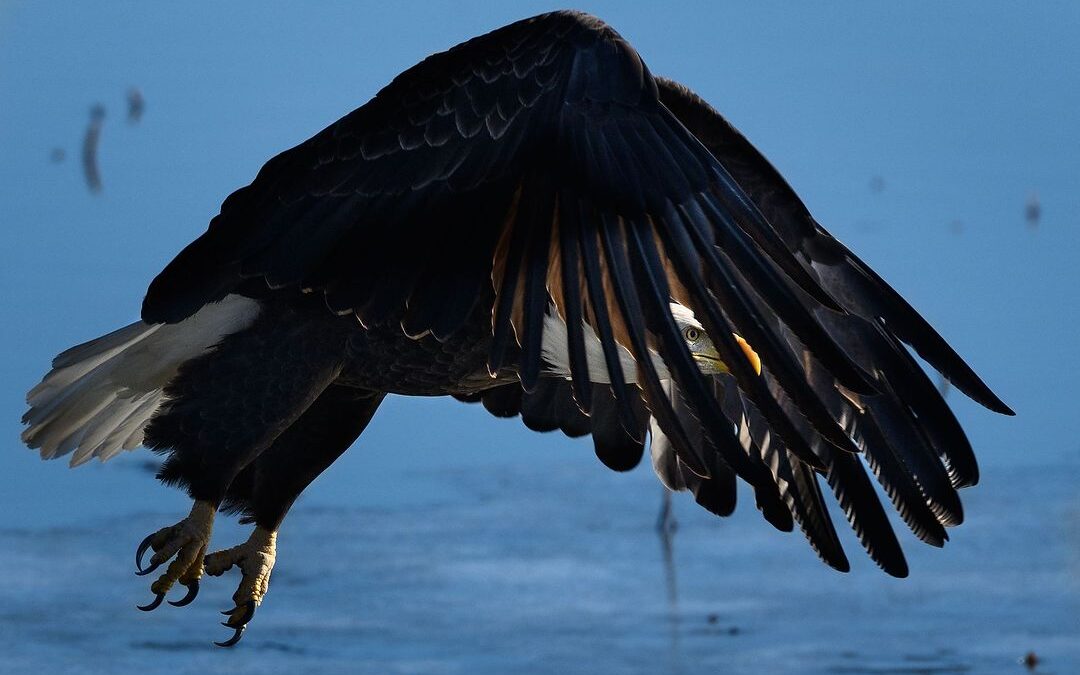In the Wildlife and Night Photography classes I’ve been teaching online the last few months, I stress the importance of things like good planning, understanding animal behavior, autofocus modes, smart exposure control and proper lens use among many, many other topics. Last week I had an opportunity to put what I preach into practice over the course of 14 hours and 300 miles.
Every fall, tens of thousands of birds migrate through a wildlife refuge a hundred miles north of where I live. Which attracts bald eagles by the hundreds. Better yet, that refuge, Loess Bluffs, publishes a weekly bird count. Two weeks ago I drove up there because that count said there were over 300 eagles present (and here’s my story about that). The following week, that number had doubled. Add to that the rare conjunction of Jupiter and Saturn on Monday evening (Dec. 21), plus a great weather forecast, and I had a busy day to plan.
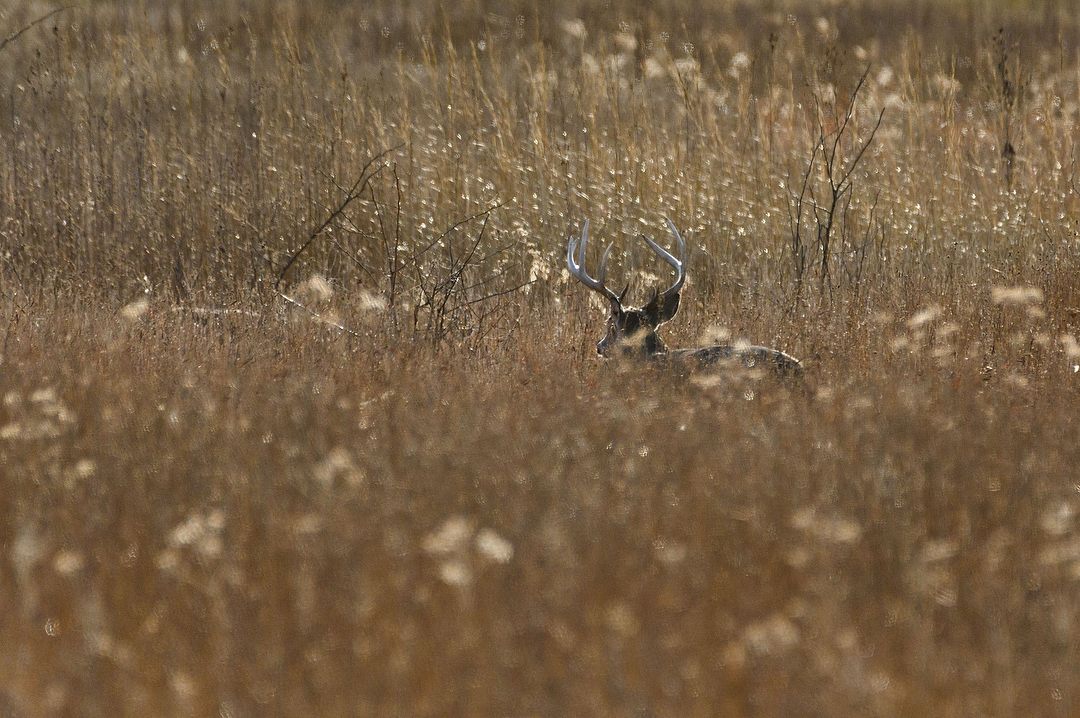
There are more than just birds at the refuge, like this deer I found while driving through. Nikon Z 6 II, Aperture Priority, Sunny white balance, ISO 1600, 1/2500 at f/8 in Matrix metering, -0.7 EV, Nikkor VR 200-500mm f/5.6E lens with TC-14e III teleconverter for 700mm.
There are two ways to approach wildlife photography: just go out and hope you find something, or do research first. Both involve luck, but research greatly improves your odds of success. I’d been to this refuge before, mainly to photograph waterfowl (like snow geese during their migration). And while I’d heard that large numbers of eagles gather there at certain times, until this year I hadn’t gone there to photograph them. So the first thing I needed to do was learn more about eagles’ habits, like when they’re most active and what they eat. Thanks to the internet, that’s easy. Two of the best resources I found were the American Eagle Foundation and the National Eagle Center.
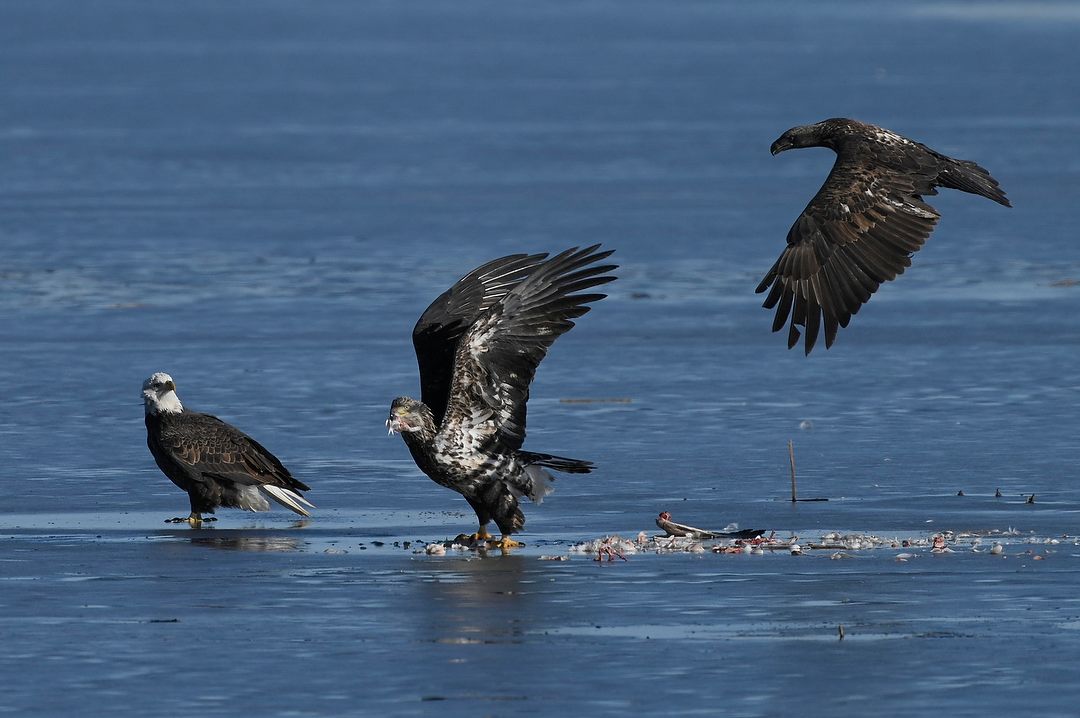
An adult and pair of juvenile bald eagles feed on the remains of a goose in the ice. Nikon Z 6, Aperture Priority, Sunny white balance, ISO 320, 1/2000 at f/8 in Matrix metering, -1.0 EV, Nikkor AF-S VR Nikkor 500mm f/4G ED lens with TC-20e III teleconverter for 1000mm.
Having done that, I knew they were likely to be active early in the day, so that meant leaving home before sunrise. I also knew there would be juveniles (young birds, with much different coloring) and adults, and that eagles pair for life or until one dies. Plus lots of other fascinating things, like wingspan, speed of flight, mating behavior and that they make GIANT nests (one was found to weigh over a ton!). Did you know their eyesight is so good they can see a rabbit from three miles away? Plus other, less useful but still interesting things like the fact their call is fairly weak and unimpressive, so in movies and TV when you see an eagle they often substitute a more striking call, like that of a hawk.
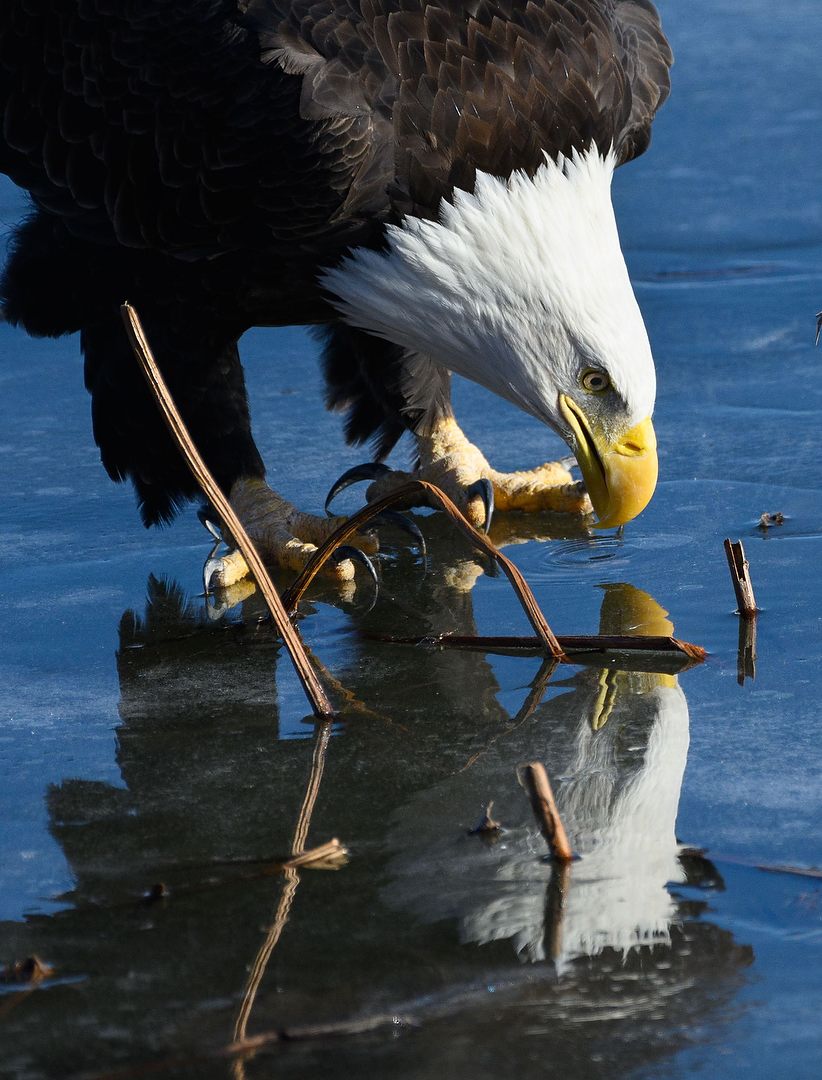
This eagle was only about 30-feet away, ignoring me as it pecked at the ice. It’s the same bird I photographed flying away, in the photo at the top of this story. Nikon Z 6 II, Aperture Priority, Sunny white balance, ISO 1250, 1/2500 at f/8 in Matrix metering, -0.7 EV, Nikkor VR 200-500mm f/5.6E lens with TC-14e III teleconverter for 700mm.
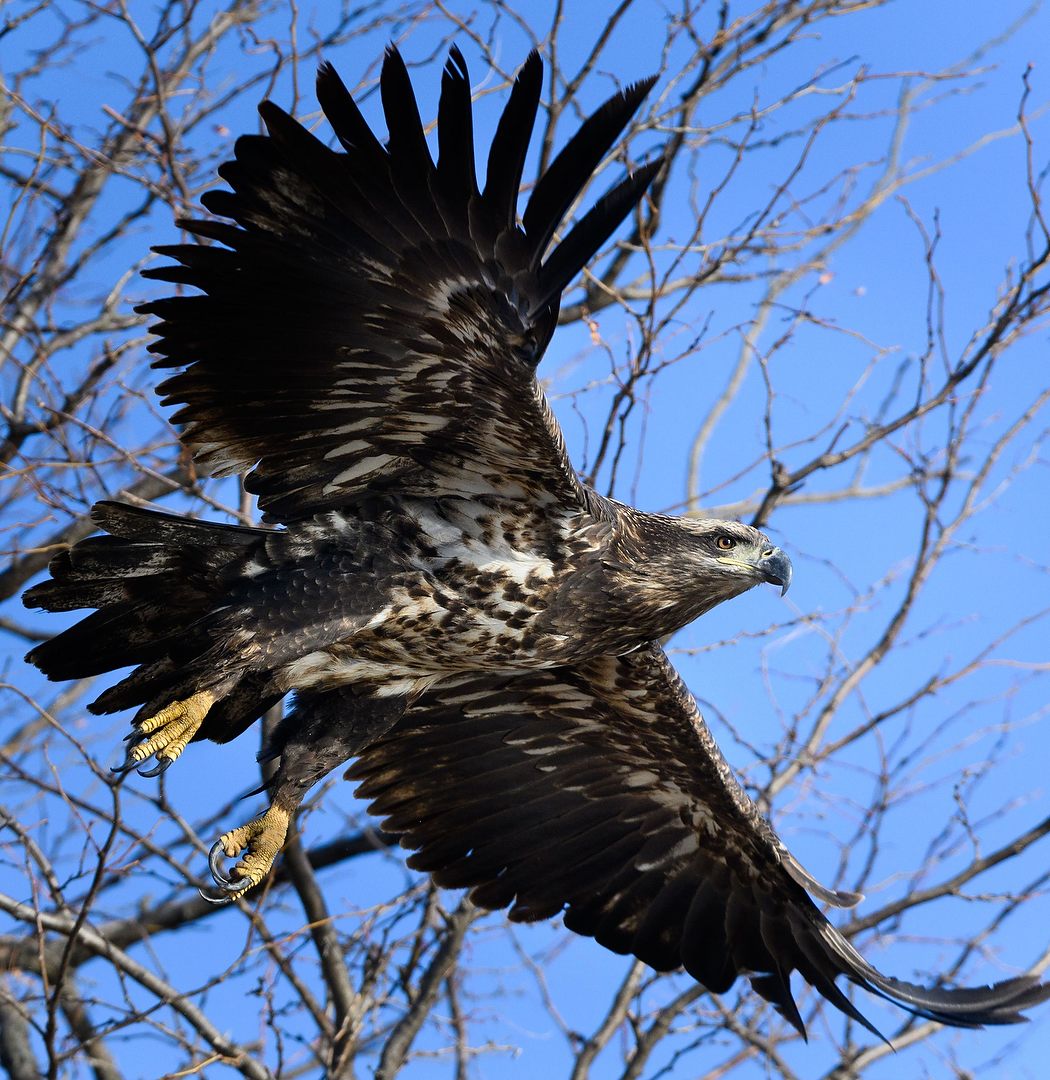
The eagles (this one a juvenile) spend most of their time sitting in trees. If you’re lucky, you’ll find one perched low enough for a good picture, and luckier still if it takes to the air while you’re ready. Nikon Z 6 II, Aperture Priority, Sunny white balance, ISO 2000, 1/2500 at f/8 in Matrix metering, 0.0 EV, Nikkor VR 200-500mm f/5.6E lens with TC-14e III teleconverter for 370mm.
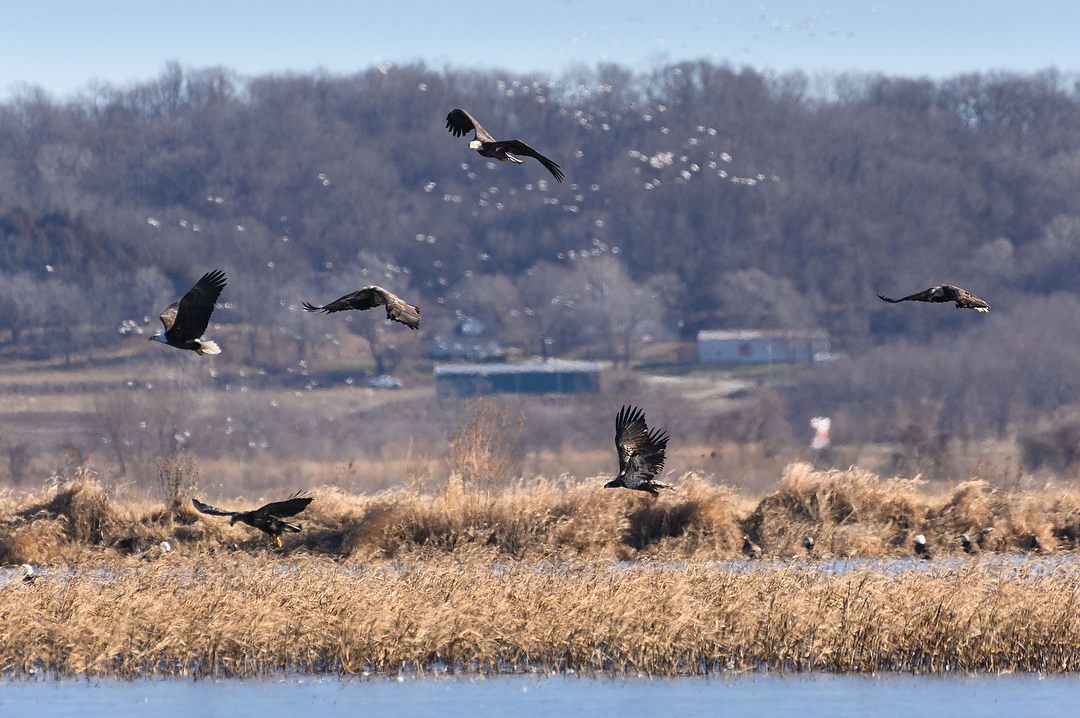
While there are hundreds of bald eagles at the refuge right now, most of the time they’re too far away for a good picture, like this group. Note all the others as well, along the water’s bank in the background. Nikon Z 6 II, Aperture Priority, Sunny white balance, ISO 1250, 1/2500 at f/8 in Matrix metering, 0.0 EV, Nikkor VR 200-500mm f/5.6E lens with TC-14e III teleconverter for 700mm.
Next on my list to be researched was “the Christmas Star.” That’s when Jupiter and Saturn appear close together, which is called a “conjunction.” The last time they were this close was 800 years ago, and the next time will be in 2080. Using a great little app called “SkyGuide,” I knew it would become visible above the southwestern horizon about 30 minutes after sunset (which would be 5:30pm for me). Since I was already going to be north of Kansas City, I’d want to find a good location up that way.
Over the last few years I’ve become a big fan of night photography, and that, too, requires some research to be truly successful. For instance, knowing that the planets would appear to the southwest meant I wanted to make sure no large cities would be behind the location I used, or horizon glow could become an issue. But location would involve more than just that. I also wanted to find a spot that had an interesting foreground subject, which is a very important part of night photography. You don’t just photograph the sky with stars or the Milky Way, but need to have something good here on earth in the foreground. That almost always makes a more interesting picture. So the question then, is “what?”
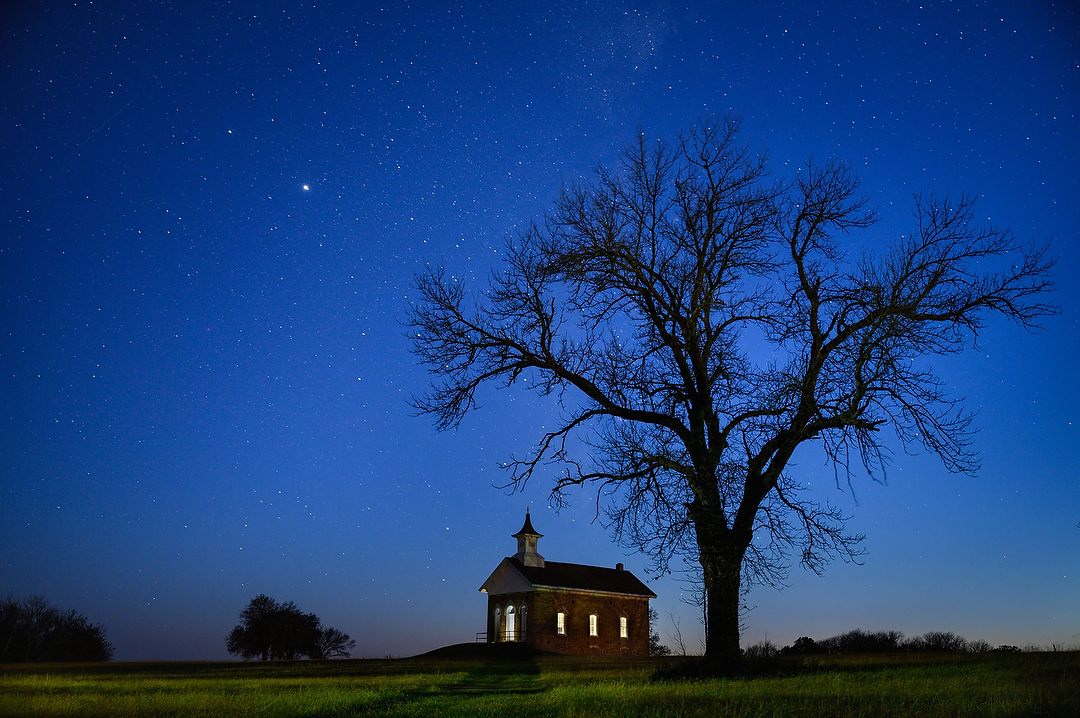
Here’s a good example from earlier this fall of a strong foreground subject for a photo including the night sky. Nikon Z 6, Manual exposure, Sunny white balance, ISO 800, 15-seconds at f/2.8, Nikkor Z 24-70mm f/2.8 S lens at 34mm.
Being winter, a nicely shaped tree is always a good possibility. Even better would be something like an old church, schoolhouse or windmill. Whatever it is, it does need to be above the horizon so it can be silhouetted (or light painted) against the sky. So I began my search online, first to find the names of the Kansas counties west or southwest of the refuge. Once I had the county names, I could start doing searches like “Historic sites in Doniphan County,” or “Doniphan County Historical Society,” or the county name and “historic,” or “abandoned” plus “church” or “schoolhouse.” Once I have some possible candidates, I then go to Google Maps, plug the name in and switch to satellite view. With that I can check the layout of the location, roads nearby, and just as importantly, whether there are any homes or farms close by whose dusk-to-dawn lights could ruin the photo.
Having done all that, I found a few possibilities. The first was “Four State Lookout,” a high point near White Cloud, KS that offers views of Missouri, Iowa, Nebraska and Kansas. It was only a half hour’s drive from the eagles, and might offer a view southwest with something interesting in the foreground. With sunset at 5pm, I planned on leaving the wildlife refuge at 3pm. That was more time than I’d need to get to the different locations, but also part of the plan. After all, I’d be scouting during the drives, seeing if anything else I found might work too.

Using satellite view in Google maps I could scout the area around Doniphan Cemetery without actually being there.
Four State Lookout didn’t offer a good foreground, so it was out. The next spot was another 30-minutes away, an old cemetery. From Google Maps it looked promising: isolated, with no farms or homes nearby. I had a third possibility as well, if needed, but after arriving at the cemetery, I knew I wouldn’t be going there. Doniphan Cemetery is an old, well-kept spot on a knoll, with farmland rolling off below it in every direction. Between the trees and the monuments, and its elevated position, I knew it would do the job. Once there, with the help of Sky Guide and my phone’s compass, I could figure out where in the sky I’d see the planets and set up accordingly.
As the sun dropped below the horizon, the sky took on a beautiful sunset glow, which at this point was just icing on the cake.
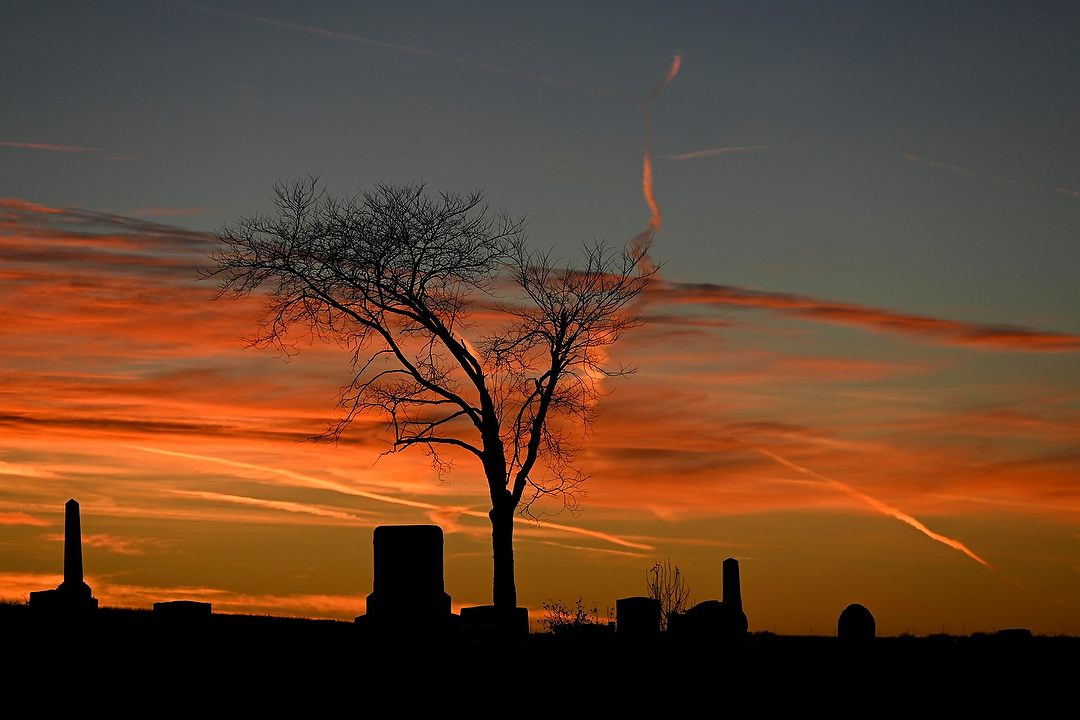
Not letting a good sunset go to waste, I used a lone tree and some headstones for a foreground. Nikon Z 6 II, Aperture Priority, Sunny white balance, ISO 400, 1/250 at f/6.3 in Matrix metering, 0.0 EV, Nikkor Z 24-200mm f/4-6.3 VR lens at 200mm.
As I was admiring and shooting the sunset, I noticed a contrail that looked as if it would pass by the planets. That resulted in a mad scramble, as I had one camera with a short telephoto on the tripod, and only about thirty seconds to remove and replace it with my other camera, luckily with a 200-500mm lens already on it. managing that just barely in time, I got one good frame before the jet had passed too far to the right.
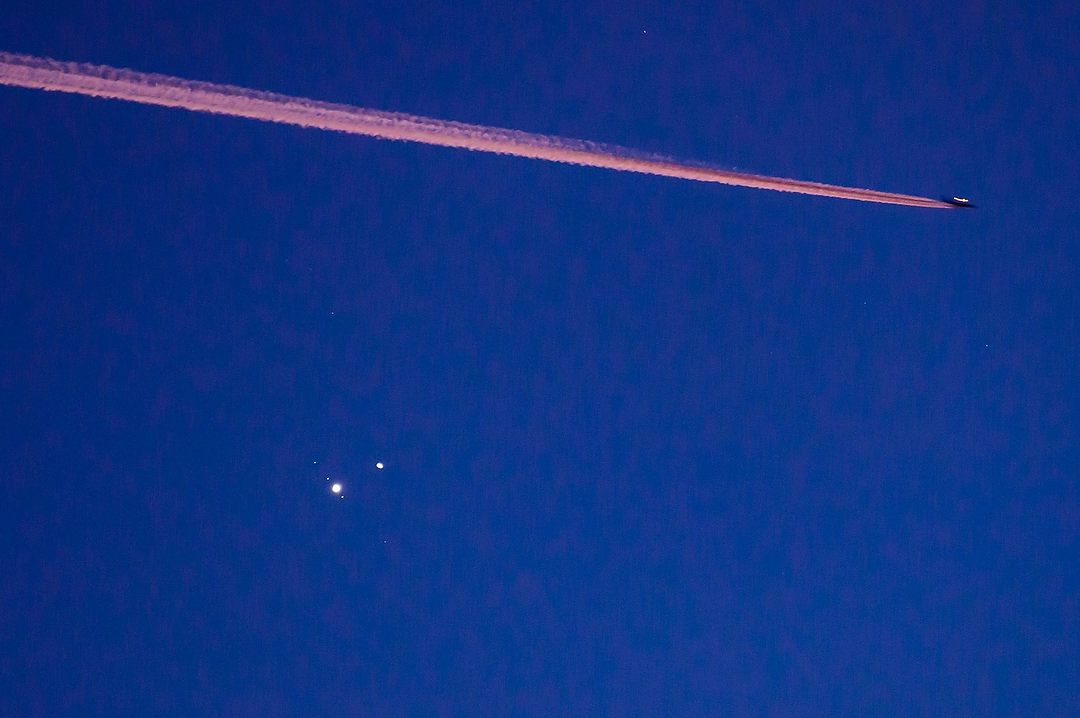
Not the sort of foreground subject I usually look for, the advantage to having this jet in the frame is that I could use a longer telephoto lens, which makes the planets appear larger than they would with a shorter focal length lens. In this photo you can actually see some of Jupiter’s moons. Nikon Z 6, Aperture Priority, Sunny white balance, ISO 3200, 1/8 at f/6.3 in Matrix metering, -2.0 EV, Nikkor AF-S Nikkor 200-500mm f/5.6E ED VR lens at 500mm.
After that it was back to the other camera to make the most of the fading sunset and the planets. Once the sunset was gone so was I. But I’ll return, to do some more night photography. Finding a great location like this, with good views and foregrounds in every direction, is pretty special.
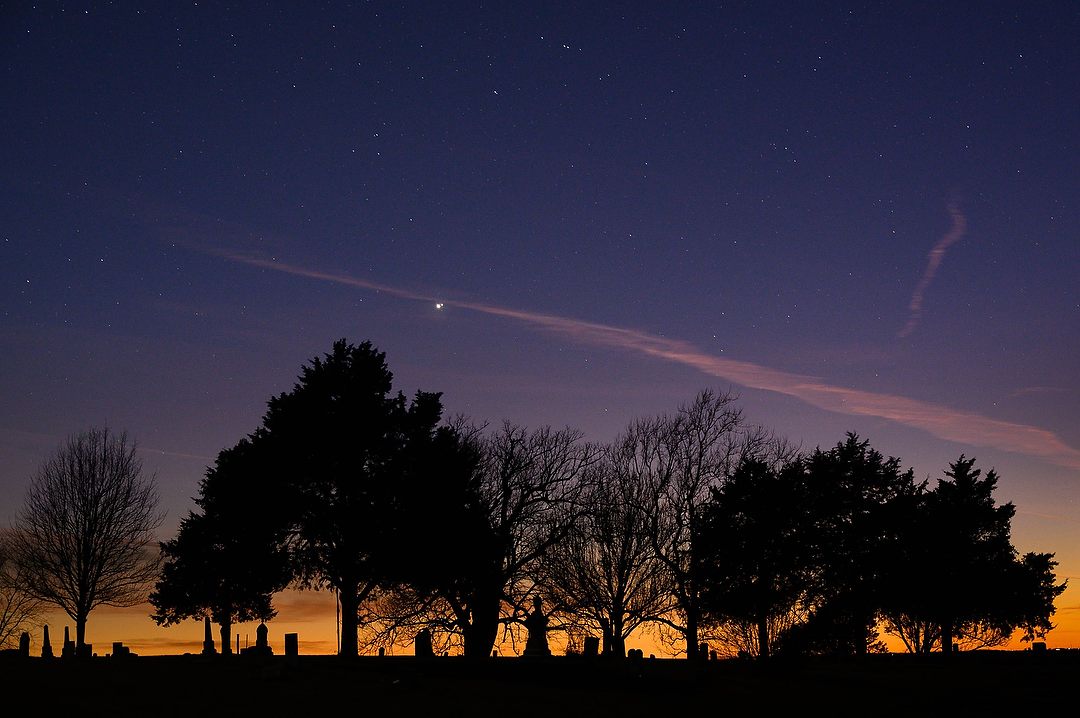
Everything came together for this photo, including a streak of colorful cloud pointing directly to the conjunction, plus enough fading sunset to nicely silhouette the cemetery. Nikon Z 6 II, Aperture Priority, Sunny white balance, ISO 2000, 8 at f/6.3 in Matrix metering, -1.7 EV, Nikkor Z 24-200mm f/4-6.3 VR lens at 61mm.
I returned home in the dark, just like I’d left in the dark fourteen hours earlier, but with no complaints. The day had turned out great, thanks to a bit of careful planning.
– Interested in learning more about how I research and do Wildlife and/or Night photography? Check out the live, online classes I’m teaching, at this link –
(If you like this story, please share it with your friends and let them know about the links on photography that I post on my business Facebook page. I’m also on Instagram and Twitter, @reedhoffmann. And if you’re curious about the workshops I teach, you can find them here. And, you can subscribe to this blog on my home page.)

